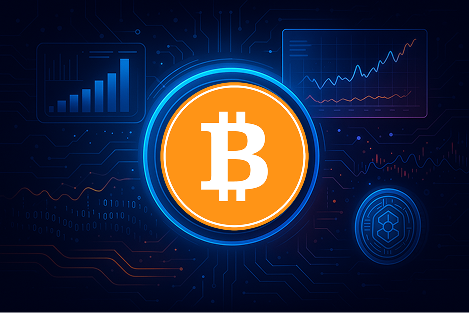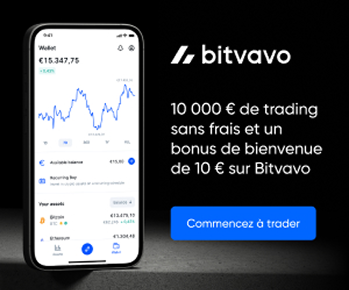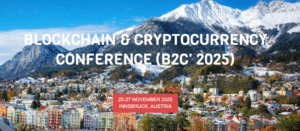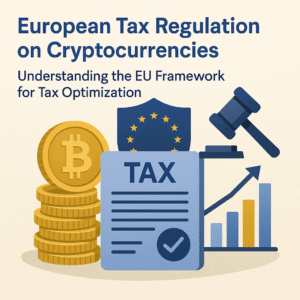INV (Inverse Finance): Analysis, Functionality, and Investment Guide

INV is the native token of the Inverse Finance protocol, a decentralized platform focused on decentralized finance (DeFi). Discover how it works, its concrete use cases, and how to safely buy or invest in INV.
Introduction: INV, a Key Player in DeFi
In the ever-evolving world of decentralized finance, Inverse Finance stands out with its innovative approach aimed at providing accessible and efficient financial solutions. The INV token plays a central role in this ecosystem, enabling users to participate in protocol governance and benefit from various DeFi services. Unlike other DeFi projects, Inverse Finance emphasizes the creation of robust financial tools, such as unsecured loans and automated investment strategies, while ensuring transparent community governance. This approach positions INV as a utility token with real added value for its holders.Key takeaways
- How Inverse Finance operates and the role of the INV token;
- Concrete use cases and the protocol’s value proposition;
- The project’s history and key development milestones;
- The best strategies for buying, storing, or investing in INV;
- Medium-term prospects for INV’s price evolution.
Presentation of INV: The Governance Engine of Inverse Finance
Inverse Finance is a DeFi protocol designed to offer decentralized financial services such as lending, saving, yield strategies, and on-chain treasury management. At the heart of this infrastructure, the INV token plays an essential role, particularly as a governance tool, allowing its community to vote on proposals and protocol directions. Initially launched as an experimental DAO by Nour Haridy, an active developer in the Ethereum ecosystem, Inverse Finance quickly established itself as a serious project thanks to its products like DOLA (a native stablecoin) and Anchor (an unsecured lending market). These tools make Inverse Finance an innovative platform, seeking to create stable, transparent, and resilient services for decentralized finance users. Unlike many DeFi projects often limited to yield farms or purely speculative tokens, INV integrates into a coherent ecosystem centered on financial autonomy. It allows its holders not only to govern but also to access optimized yield opportunities while participating in the stabilization of DOLA. The absence of excessive inflationary models, the limited supply of INV, and its active governance function make it a utility token with long-term valuation potential, aligned with the objectives of Web3 and financial decentralization.Technical Operation of INV: Active Governance at the Core of DeFi
The INV token functions as a gateway to Inverse Finance’s governance, while also integrating into a structured and interconnected DeFi ecosystem. Unlike passive tokens used solely for speculation, INV grants its holders real decision-making power within the protocol, supported by a solid technical infrastructure. Inverse Finance’s technical foundation is built on three pillars:- DOLA, an algorithmic stablecoin issued and maintained without traditional collateral, used for internal borrowing and payments.
- FiRM, a fixed-rate lending system where users can borrow DOLA against specific collateral assets.
- On-chain governance via INV, enabling each holder to propose or vote on protocol changes, including risk parameters, integrations, and treasury strategies.
- Immutable smart contract: deployed on Ethereum, audited, and open-source.
- Full DAO governance: all strategic decisions require community voting.
- Direct economic utility: holders influence DOLA issuance and DAO strategies.
- Monetary stability via DOLA: linked to protocol efficiency and collateral policy.
History and Creation of Inverse Finance (INV) – A Protocol Born from Community Experimentation
From its inception, INV was distributed fairly to the community, with no presale or centralized fundraising. This radical approach reflected a desire to build a resilient, user-governed protocol. By January 2021, the Inverse Finance DAO was activated, giving token holders control over the project’s direction. The year 2021 marked a turning point with the launch of the DOLA stablecoin and the FiRM lending system. These innovations positioned Inverse Finance alongside major DeFi protocols like MakerDAO and Aave, but with a more modular architecture and a pronounced commitment to community governance. Despite challenges—including flash loan attacks in 2022—Inverse Finance adapted, strengthened its security, and refined its risk management policies. The mostly pseudonymous and distributed team continues to collaborate closely with the DAO to evolve the protocol. Key milestones:- December 2020: Project founded by Nour Haridy.
- January 2021: DAO activation and initial INV token distribution.
- April 2021: Launch of the DOLA stablecoin.
- 2022: Security reinforcements following attacks; overhaul of loan management.
- 2023–2024: Continuous improvement of FiRM and progressive integration with other DeFi platforms.
Founders and Team
Inverse Finance was founded in December 2020 by a pseudonymous developer known as Nour Haridy. Initially launched as an experimental decentralized treasury management project, it quickly evolved into a broader vision: to offer a complete suite of DeFi products governed collectively and transparently.
What Makes [Nom cryptomonnaie] Unique?
Unique Features and Use Cases of Inverse Finance (INV)
Inverse Finance distinguishes itself through a modular and community-driven approach to decentralized finance. Rather than creating a monolithic protocol, the project develops a suite of interoperable tools centered on stablecoin issuance, lending, and treasury management, all governed by an active DAO.
The first key element is DOLA, a native algorithmic stablecoin. Unlike other stablecoins dependent on oversized collateral, DOLA operates with mint and burn mechanisms tied to market demand, while being backed by transparent reserves. It is used for borrowing or providing liquidity within the DeFi ecosystem.
Another major feature is FiRM (Fixed Rate Market), a unique fixed-rate lending system without liquidation. It allows users to lock in collateral (like ETH or wBTC) to borrow DOLA at a fixed rate, without the risk of immediate liquidation in case of collateral price drops. This model offers rare stability in DeFi.
Complementing this, Inverse Finance develops an active treasury management strategy via its DAO, allocating funds to yield-generating strategies. Decisions are made collectively by INV token holders, reinforcing the project’s community aspect.
Main Use Cases:
- DOLA Stablecoin: For exchanging, saving, or borrowing within the DeFi ecosystem.
- FiRM: Decentralized fixed-rate loans without liquidation.
- DAO Governance: Community management of decisions and treasury strategies.
- Inter-protocol Integration: Use of DOLA in Curve, Balancer, or other DeFi platforms.
- Yield Strategies: Yield generation via the DAO on surplus collateral.

Through this combination of tools focused on stability, governance, and financial innovation, Inverse Finance establishes itself as a distinct DeFi protocol, more akin to a financial cooperative than a mere speculative product.
Conclusion and Future Prospects of Inverse Finance (INV)
Inverse Finance positions itself as a credible and differentiating alternative in decentralized finance. With its native stablecoin DOLA, fixed-rate loans without liquidation via FiRM, and participatory DAO governance, the protocol offers a model resolutely oriented towards stability, transparency, and financial resilience. This positioning attracts users seeking safer and more sustainable DeFi tools, away from the excessive volatility that characterizes much of the market. The integration of DOLA into protocols like Curve or Balancer, as well as the continuous development of new community strategies, confirm Inverse Finance’s growing anchoring in the ecosystem. In the future, INV’s success will depend on its ability to strengthen DOLA adoption, maintain rigorous management of its decentralized treasury, and extend the interoperability of its solutions. Its unique approach—at the crossroads of financial innovation and democratic governance—makes it a protocol to watch closely for investors seeking a solid and long-term-oriented DeFi project.
FAQ Inverse Finance: Price, Purchase, Security, and Token Utility
- What is the purpose of the INV token?
- Is Inverse Finance a good investment?
- What differentiates INV from other DeFi tokens?
- Where can I buy and store INV?
- Is the Inverse Finance protocol secure?
- Is there governance in Inverse Finance?
Disclaimer :
Trading is risky and you may lose all or part of your capital. The information provided does not constitute financial advice and/or an investment recommendation
Top-Rated Platforms to Trade Crypto
Explore Our Financial Views on the Market
Crypto News & Insights
Digital Assets Forum 2026 returns to
The Digital Assets Forum (DAF), one of Europe’s most respected...
Blockchain and Cryptocurrency Conference (B2C’ 2025):
The Blockchain and Cryptocurrency Conference (B2C’ 2025) is scheduled for...
European Tax Regulation on Cryptocurrencies: Understanding
The regulation of the cryptocurrencies market in the European Union...













